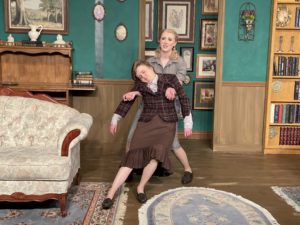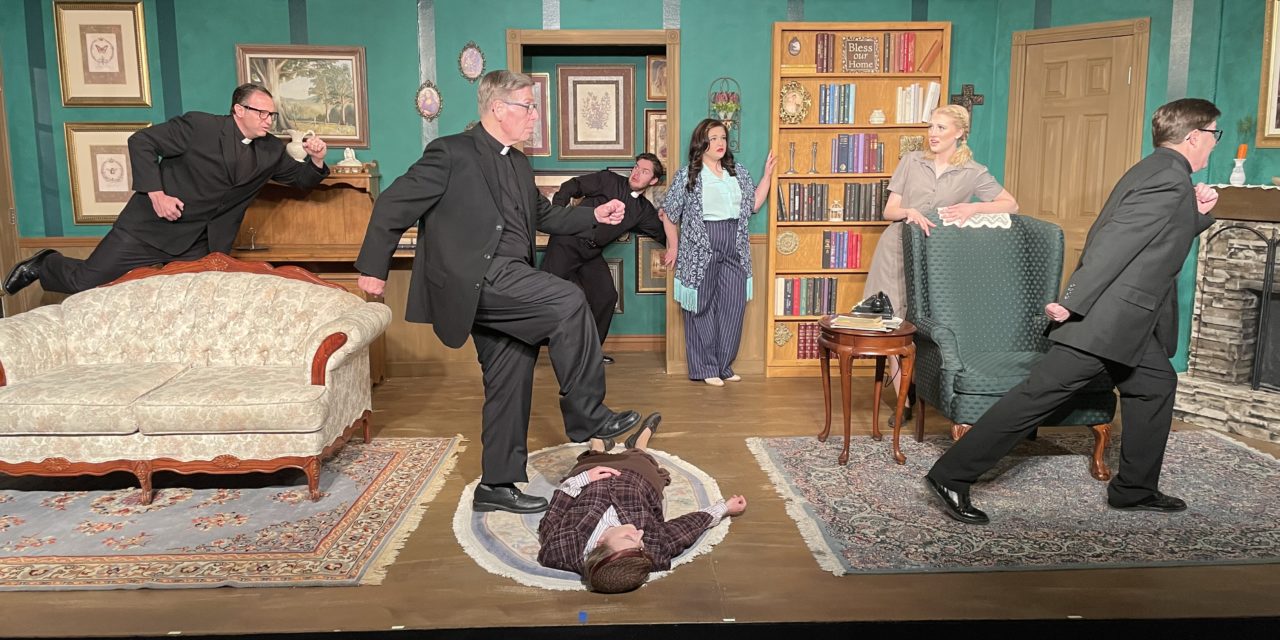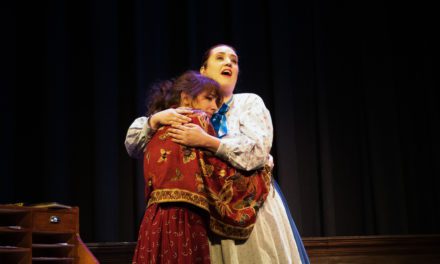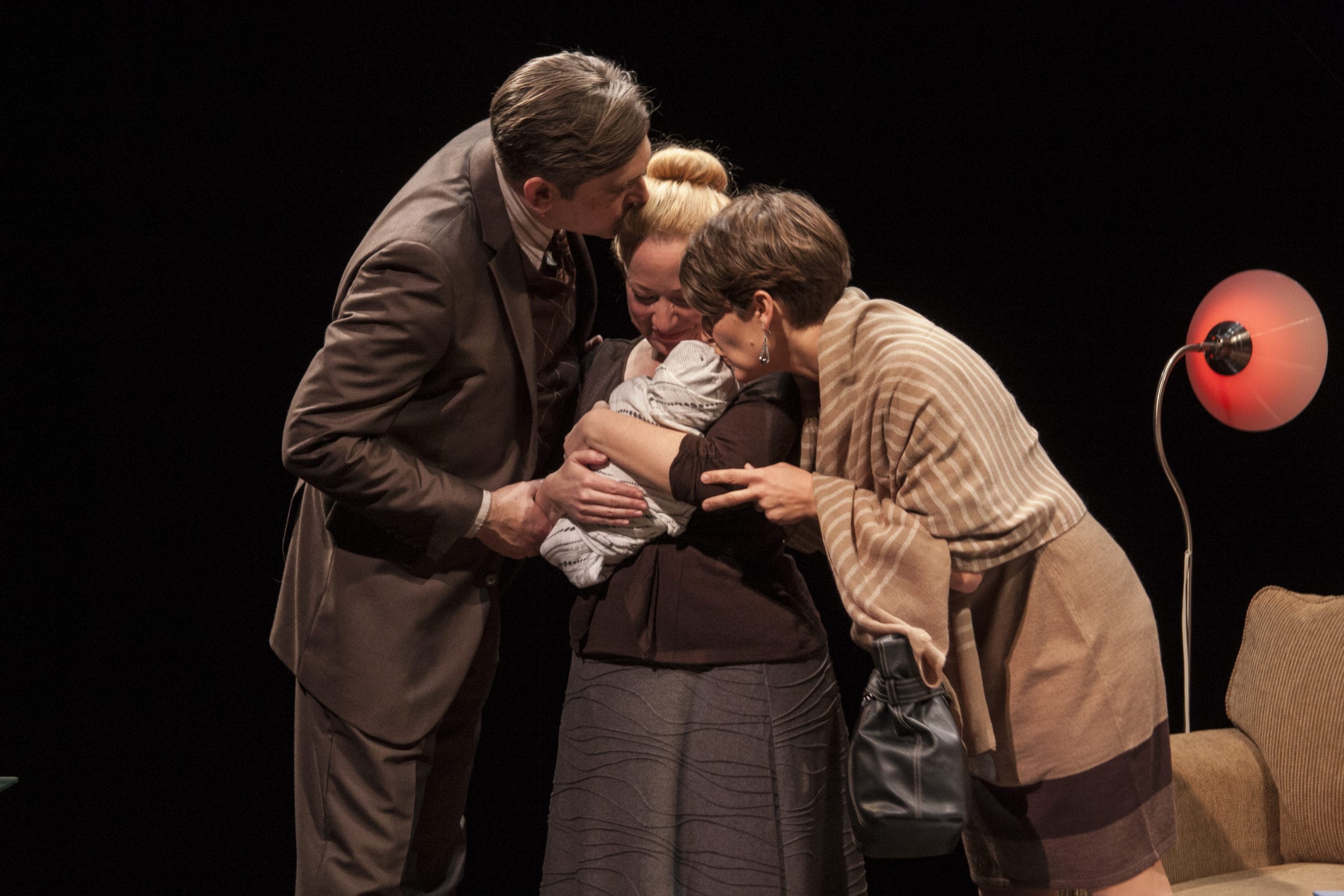PLEASANT GROVE — The Pleasant Grove Players production of See How They Run is so delightful that my biggest challenge in reviewing it is deciding which aspect of the show I enjoyed most.

Show closes May 16, 2022.
In See How They Run, American ex-actress and newlywed Penelope Toop has a chance encounter with a friend and former castmate who now serves in the American army, Corporal Clive. When the two decide to see a play together in another town, Clive must change clothes because he cannot be in uniform so far from the base. Penelope lends him a set of Mr. Toop’s clothes. As Mr. Toop’s profession is as a vicar in the Church of England, that means that Clive must dress like a priest. This decision triggers a series of mishaps through the night, including mistaken identity, frantic chases, and five different characters dressing as a priest at one time or another.
Philip King‘s script premiered in 1944, and only a strong, durable play can last that long. The question in a production of See How They Run is not whether the script works, but whether the directing, comedic timing, and acting fulfill the show’s potential. Directors Howard and Kathryn Little are experts at their craft, and the pair make directing a farce look deceptively easy. Even the most zany moments of the play appear organic. Moreover, they ratchet up the humor and tension gradually, allowing the play to have a natural progression of increasing humor (and raising the stakes for characters, too). Most importantly, though, the comedic timing is impeccable, and every joke lands at the precise moment where it can get the most laughs.

Back to front: Isabelle Headlee as Ida and Rebeka Olson as Miss Skillon. Photo by Howard Little.
The cast for See How They Run is superb, and audiences will struggle in vain to find a poor actor in the bunch. Matthew DelaFuente handles the 1940s American slang well, and the quick back-and-forth he had with Penelope in the first act made it feel like the two really were old friends with a long history together. DelaFuente had some of the best reactions of the evening, and he often made me chuckle with a simple glance or gesture. As the action becomes more frantic, DelaFuente sets a high standard for his castmates in energy and charisma as he bounds across the stage and has his character desperately search for a way out of his predicaments.
Madeline played Mrs. Toop with confidence and relaxed mannerisms that contrasted well with the uptight, proper Miss Skillon (played by Rebekah Olson). Madeline was burdened with much of the exposition in the first act, and she had natural line deliveries that conveyed information without signaling it explicitly. Miss Skillon has the biggest change among characters in the evening, and Olson was enjoyable both as the prim busybody parishioner and the loutish drunk.
Among the other actors, one standout was Andrew Reid as the Russian. His wide eyes and nervous body language instantly added a layer of danger to his scenes. Likewise, Dennis Purdie is an understated presence as the long-suffering Bishop of Lax; his quieter performance was sturdy and unflappable, and he provided a more verbal style of humor and an anchor of stability for all the physical comedy and wackiness happening on stage. Finally, I got a kick out of Isabelle Headlee as the maid Ida as she would periodically enter with her cheery smile and attempt to handle the strange events in the home.
On the technical side, I am most impressed by the triple threat that is Tina Fontana. As the show’s set, costume, and props designer, many of the commendable visual elements can be traced to her. The set was decorated like a cozy living room, with the rugs, framed artwork, and furniture that brought an authentic 20th century flavor to the setting. My favorite costumes that Fontana designed were for Miss Skillon (dressed in a 1940s suit featuring different shades of brown) and Penelope (dressed in brighter colors and billowy trousers). The vastly different costumes did much to communicate the two characters’ differing lifestyles and viewpoints.
As this review draws to a close, I find that I still cannot decide what I liked most about See How They Run. I guess that readers will have to attend the production from the Pleasant Grove Players to figure it out for themselves.




